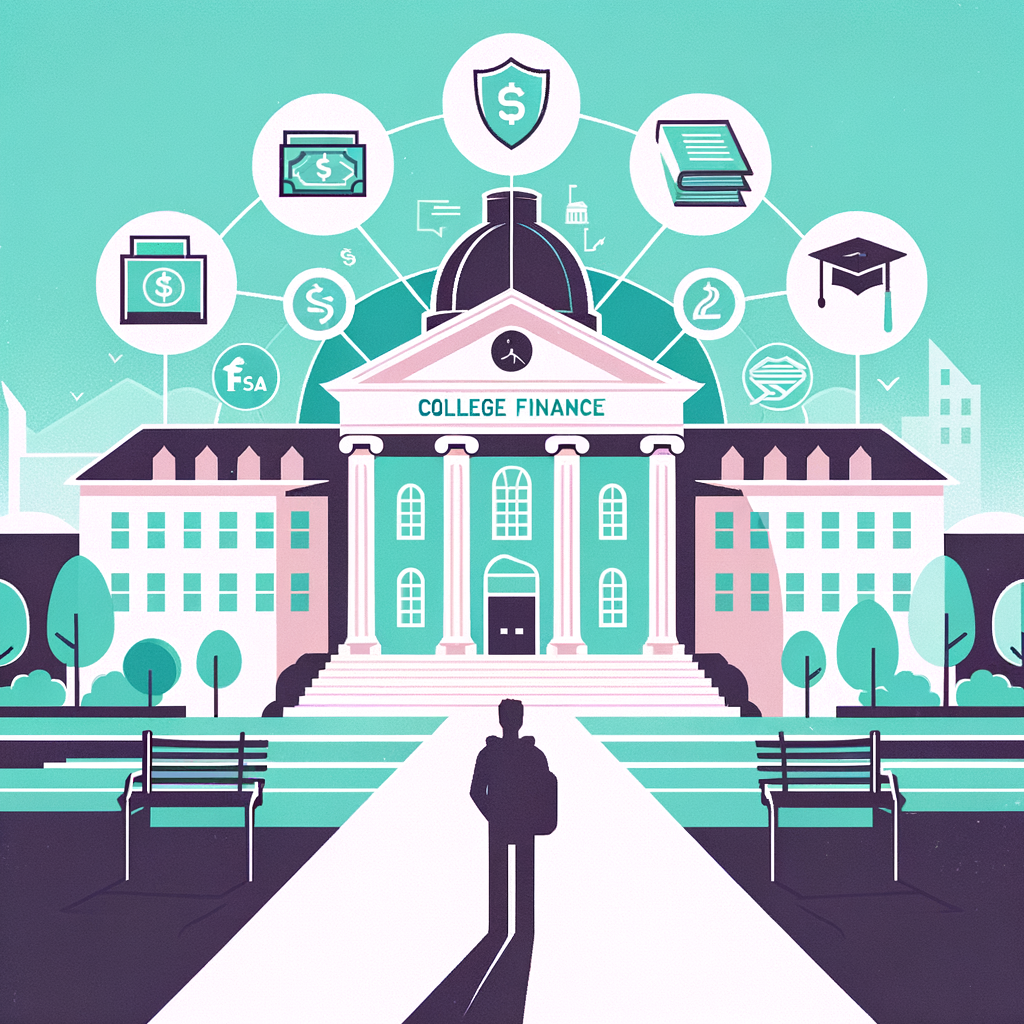Advertiser Disclosure
Last update: November 17, 2024
10 minutes read
2024 Student Loan Debt Statistics & Insights
The data you've been waiting for is here! Check out the latest 2024 student loan debt statistics, repayment challenges, and key updates. Dive in to understand the current state of student loan debt in America.

By Derick Rodriguez, Associate Editor
Edited by Brian Flaherty, B.A. Economics
Learn more about our editorial standards



By Derick Rodriguez, Associate Editor
Edited by Brian Flaherty, B.A. Economics
Learn more about our editorial standards
The numbers are in: Americans currently owe an overwhelming $1.6 trillion in student loan debt, highlighting the deepening crisis in higher education financing [1].
Dive into our latest guide to uncover 2024's key statistics, repayment challenges, and forgiveness options, and discover how this may impact you more than you think!

Key takeaways
- Americans owe $1.6 trillion in student loan debt, a slight decrease from last year
- The SAVE repayment plan aims to increase forgiveness rates among low-income borrowers, and a 2023 adjustment forgave $39 billion in student loans
- In the 2022-23 academic year, $98.2 billion was borrowed, with a significant reliance on federal unsubsidized loans
Americans owe an enormous amount in student loan debt. The Biden administration had an ambitious plan to reduce the burden by approximately $430 billion. However, in June 2023, the Supreme Court halted this effort, dealing a significant blow to borrowers who were close to receiving up to $20,000 in loan forgiveness [2].
This decision was devastating for many borrowers who had been counting on this relief. Adding to their woes, federal student loan repayments, which had been paused since March 2020 due to the COVID-19 pandemic, resumed in October 2023. This marks a challenging transition for many who have not had to make payments in over four years.
Still, the Biden Administration has some student loan successes, like introducing the SAVE (Saving on a Valuable Education) repayment plan, designed to increase forgiveness rates among low-income borrowers. In addition, a 2023 payment count adjustment by the Department of Education automatically forgave $39 billion in student loan debt [3].
With the upcoming election possibly changing the course of government policy, it’s crucial to understand the current landscape of student loan debt in America. Our updated statistics page dives into the challenges and burdens that borrowers are facing today. Read on to explore more about the state of student loan debt in 2024.
Key student loan debt statistics
As of the second quarter of 2024, Americans owe a staggering $1.6 trillion in federal and private student loan debt. This represents a 0.56% decrease from the same period in 2023 [1]. Of this amount, $130.28 billion is attributed to private student loan debt, reflecting the diverse sources from which students and families are borrowing to finance higher education [4].
In the 2022-23 academic year, students and parents borrowed an estimated $98.2 billion [5]. This borrowing was divided among various loan types: 44% comprised federal unsubsidized loans, 16% were federal subsidized loans, 14% were Grad PLUS loans, 15% were private or other nonfederal loans, and 11% were Parent PLUS loans.

TuitionHero Tip
This distribution highlights the reliance on federal loan programs, with unsubsidized loans being the most significant portion.
Among the class of 2020 graduates, 61% of bachelor’s degree recipients from four-year public schools and 65% from four-year private nonprofit schools graduated with student loan debt [6]. On average, these graduates carried $30,500 in combined federal and private student loan debt.
Notably, graduates from private nonprofit institutions had higher average debt at $33,910, compared to $27,430 for their peers from public colleges. Furthermore, graduates from private nonprofit schools were slightly more likely to incur debt, with 61.3% leaving with loans compared to 58.7% of public school graduates [6].
As of the second quarter of 2024, 42.8 million borrowers hold federal student debt, a slight decrease from 43.6 million in the same period in 2023 [7]. This marginal decline suggests that while new borrowing continues, some people are successfully paying off their loans or seeking alternative means of repayment.
Encouragingly, the rate of student loans 90 days or more delinquent has significantly decreased to 0.77% in the first quarter of 2024, down from 0.94% during Q1 2023 and a stark contrast to the 8.76% at the onset of the COVID-19 pandemic in the first quarter of 2020 [1]. This reduction in delinquency rates may indicate improved economic conditions and effective loan management strategies among borrowers.
These statistics provide a snapshot of the evolving landscape of student loan debt in the United States, highlighting both the ongoing challenges and areas of progress in addressing this critical issue.
A historic look at federal and private student loan debt
Quarter | Total debt (in millions) |
|---|---|
Q1 2021 | $1,584,000 |
Q2 2021 | $1,570,000 |
Q3 2021 | $1,584,000 |
Q4 2021 | $1,576,000 |
Q1 2022 | $1,590,000 |
Q2 2022 | $1,589,000 |
Q3 2022 | $1,574,000 |
Q4 2022 | $1,595,000 |
Q1 2023 | $1,604,000 |
Q2 2023 | $1,569,000 |
Q3 2023 | $1,599,000 |
Q4 2023 | $1,601,000 |
Q1 2024 | $1,595,000 |
Data table titled 'A historic look at federal and private student loan debt [1]'
Federal student loan portfolio
The U.S. Department of Education’s Federal Student Aid office provides detailed insights into the federal student loan debt landscape. This data helps us understand the distribution of debt across various loan programs, repayment plans, and other key aspects. The following information is based on data from the second quarter of 2024, with servicer information updated as of March 2024.
Federal student loan debt statistics by loan program
Loan program | Dollars outstanding | Recipients |
|---|---|---|
Direct loans | $1,440.4 billion | 37.9 million borrowers |
FFEL loans | $176.1 billion | 7.8 million borrowers |
Perkins loans | $3.4 billion | 1.1 million borrowers |
Total (all federal) | $1,620.1 billion | 42.8 million unduplicated borrowers |
Data table titled 'Federal student loan debt statistics by loan program [7]'
Federal student loan debt statistics by loan debt
Loan debt | Dollars outstanding | Recipients |
|---|---|---|
Stafford subsidized | $295.4 billion | 30.2 million borrowers |
Stafford unsubsidized | $594.9 billion | 30.7 million borrowers |
Stafford combined | $890.3 billion | 34.8 million unique recipients |
Grad PLUS | $107.5 billion | 1.8 million borrowers |
Parent PLUS | $109.8 billion | 3.6 million borrowers |
Perkins | $3.4 billion | 1.1 million borrowers |
Consolidation | $509.2 billion | 9.7 million borrowers |
Data table titled 'Federal student loan debt statistics by loan debt [7]'
Federal student loan debt statistics by loan status (direct loan program)
Loan status | Dollars outstanding | Recipients |
|---|---|---|
Loans in repayment | $984.2 billion | 25.4 million borrowers |
Loans in deferment | $132.2 billion | 3.4 million borrowers |
Loans in forbearance | $93.7 billion | 1.8 million borrowers |
Loans in default | $91.9 billion | 4.2 million borrowers |
Loans in grace period | $19.2 billion | 1.1 million borrowers |
Data table titled 'Federal student loan debt statistics by loan status (direct loan program) [7]'
Federal student loan debt statistics by repayment plan (direct loan program)
Repayment plan | Dollars outstanding | Recipients |
|---|---|---|
Level repayment plan (10 years or less) | $285.4 billion | 13.45 million borrowers |
Level repayment plan (greater than 10 years) | $76.0 billion | 1.69 million borrowers |
Graduated repayment plan (10 years or less) | $63.5 billion | 2.36 million borrowers |
Graduated repayment plan (greater than 10 years) | $33.6 billion | 0.63 million borrowers |
Income-contingent (ICR) | $49.6 billion | 1.21 million borrowers |
Income-based (IBR) | $119.2 billion | 2.05 million borrowers |
Pay As You Earn (PAYE) | $103.8 billion | 1.39 million borrowers |
Saving on A Valuable Education (SAVE) | $429.4 billion | 7.83 million borrowers |
Alternative | $26.2 billion | 0.83 million borrowers |
Data table titled 'Federal student loan debt statistics by repayment plan (direct loan program) [7]'
Compare private student loans now
TuitionHero simplifies your student loan decision, with multiple top loans side-by-side.
Compare Rates
State-by-State Analysis of Student Loan Debt
An analysis, using anonymized credit reports from over 150,000 users in December 2022, provides a comprehensive look at student loan debt across different states. For a more detailed breakdown of statistics at the state level, visit our dedicated page.
Average student loan debt by state
Rank | State | Average balance |
|---|---|---|
1 | District of Columbia | $60,037 |
2 | Maryland | $53,141 |
3 | Georgia | $50,390 |
4 | Florida | $50,005 |
5 | Delaware | $48,863 |
6 | Alabama | $47,612 |
7 | Virginia | $47,507 |
8 | New Hampshire | $47,072 |
9 | Illinois | $46,575 |
10 | Mississippi | $45,940 |
11 | New York | $45,933 |
12 | North Carolina | $45,680 |
13 | South Carolina | $45,619 |
14 | New Jersey | $45,153 |
15 | Tennessee | $44,549 |
16 | Michigan | $44,296 |
17 | Kentucky | $43,840 |
18 | Connecticut | $43,695 |
19 | Rhode Island | $43,336 |
20 | Colorado | $43,157 |
21 | Idaho | $43,094 |
22 | Missouri | $42,937 |
23 | Arkansas | $42,673 |
24 | Massachusetts | $42,582 |
25 | Oregon | $42,332 |
26 | Pennsylvania | $42,243 |
27 | Washington | $42,201 |
28 | Iowa | $41,599 |
29 | Arizona | $41,597 |
30 | Ohio | $41,552 |
31 | Texas | $41,299 |
32 | California | $40,945 |
33 | Nevada | $40,747 |
34 | Louisiana | $40,696 |
35 | Hawaii | $40,263 |
36 | Wisconsin | $40,096 |
37 | Alaska | $39,912 |
38 | Indiana | $39,907 |
39 | Montana | $39,645 |
40 | Kansas | $39,460 |
41 | Oklahoma | $39,455 |
42 | Vermont | $39,330 |
43 | North Dakota | $38,665 |
44 | Utah | $37,661 |
45 | Minnesota | $37,651 |
46 | New Mexico | $37,580 |
47 | Maine | $35,778 |
48 | Nebraska | $35,727 |
49 | South Dakota | $34,052 |
50 | West Virginia | $33,856 |
51 | Wyoming | $29,809 |
Source: Analysis of anonymized credit reports of more than 150,000 LendingTree users in December 2022. [9]
Note: Includes federal and private student loans.
Private Student Loan Debt Statistics [4]
Tracking private student loan data often involves distinguishing it from federal loan data. Here's a detailed look at the landscape of private student loan debt:
- Total Private Student Loan Debt: As of the third quarter of 2023, Americans owe approximately $130.28 billion to private student lenders. This figure represents about 8.1% of the total outstanding student loan debt, which includes both federal and private loans.
- Major Contributors: The Enterval Analytics Private Student Loan Report identifies 14 major contributors to this debt, including Citizens Bank, Discover Bank, Navient, PNC Bank, Sallie Mae Bank, SoFi, College Ave Student Loans, Navy Federal Credit Union, and six members from the Education Finance Council. Together, these contributors account for $59.27 billion of the $130.28 billion total.
- Loan Distribution: Of the outstanding balance held by these 14 contributors, undergraduate loans constitute 89.12%, while graduate loans make up 10.88%.
- Loan Status Breakdown: Breaking down the status of these loans as of the end of the third quarter of 2023: 74.3% are in repayment, 18.0% are in deferment, 6.3% are in a grace period, and 1.4% are in forbearance.
- Delinquency Rate: The delinquency rate for private student loans has seen a slight increase, with 1.47% of loans being 90 days or more delinquent as of the third quarter of 2023, compared to 1.58% the previous year.
- Cosigned Loans: During the 2023-24 academic year, a significant majority of private loans were cosigned, with 93.14% of undergraduate loans and 69.22% of graduate loans having a cosigner.
Public Service Loan Forgiveness Statistics [8]
Here is a comprehensive roundup of student loan forgiveness statistics, with a special focus on the Public Service Loan Forgiveness (PSLF) program. This breakdown provides the latest insights into the most impactful forgiveness programs, including PSLF, Temporary Expanded PSLF (TEPSLF), and the limited waiver program, based on Federal Student Aid data through June 2023.
Key statistics include:
- PSLF Borrowers: There are 2,062,648 borrowers with one or more approved PSLF employment certification forms and a positive loan balance.
- PSLF Forms Submitted: A total of 6,147,812 PSLF forms have been submitted, of which 3,997,781 have been completed.
- Unique Borrowers Granted PSLF: 670,264 unique borrowers have been granted forgiveness under PSLF, TEPSLF, and the limited waiver program, up from 388,216 in January 2023.
- Average Balance Forgiven: The average balance forgiven under PSLF, TEPSLF, and the limited waiver is $69,776, slightly down from $68,707 in January 2023.
These figures highlight the ongoing impact and reach of the PSLF programs, providing significant relief to many borrowers in public service roles.


Why trust TuitionHero
Trust TuitionHero to help you navigate student loan debt with ease. We provide accurate, up-to-date information and clear guides to make informed financial decisions. Our resources are reliable and easy to access, supporting students and families every step of the way. Let TuitionHero be your guide to managing student loans and achieving financial stability.
Frequently asked questions (FAQ)
Several factors contribute to the high student loan debt, including rising tuition costs, increased enrollment in higher education, and the prevalence of loans as a primary means to finance education. Additionally, the cost of living and other associated expenses while attending school add to the debt burden.
The Supreme Court's decision to halt the Biden administration's plan to forgive up to $20,000 in student loans has been a setback for many borrowers. This decision has left borrowers without anticipated relief, potentially prolonging their debt repayment period and financial stress.
Graduates from private nonprofit institutions generally have higher average debt compared to those from public colleges. This disparity is due to the higher tuition and associated costs at private institutions, which lead students to borrow more to cover their expenses.
Recent government policies and economic conditions have contributed to a significant decrease in student loan delinquency rates. For instance, the rate of student loans 90 days or more delinquent dropped to 0.77% in Q1 2024 from 0.94% in Q1 2023. This improvement suggests effective management strategies and potential economic recovery.
Private student loans account for about 8.1% of the total outstanding student loan debt, with a current total of $130.28 billion. While they represent a smaller portion of the debt compared to federal loans, private loans are significant for those who need additional funds beyond federal loan limits.
Final thoughts
Student loan debt is a huge part of many Americans' lives, with $1.6 trillion owed across the country. The Supreme Court's decision to block the Biden administration’s $430 billion relief plan was a tough blow, but there are still ways to manage.
Programs like the SAVE repayment plan and recent automatic debt forgiveness have provided some relief. With repayments resuming, it's more important than ever to stay on top of your options.
We hope this guide has helped you understand the current state of student loan debt and how it might affect you. Stay informed, explore your options, and remember you're not alone in this journey. For more tips and strategies, check out the rest of our resources.
Source
- Federal Reserve Bank of New York Household Debt and Credit Report
- What the Supreme Court's rejection of student loan relief means for borrowers
- Department of Education: Automatic Loan Forgiveness as a Result of Fixes to Income Driven Repayment Plans
- Enterval Private Student Loan Report 2024 Q1
- College Board Trends in Student Aid 2023
- National Center for Education Statistics Digest of Education Statistics
- Federal Student Aid Portfolio Summary
- Federal Student Aid Public Service Loan Forgiveness Data
- LendingTree U.S. Student Loan Debt Statistics
Author

Derick Rodriguez
Derick Rodriguez is a seasoned editor and digital marketing strategist specializing in demystifying college finance. With over half a decade of experience in the digital realm, Derick has honed a unique skill set that bridges the gap between complex financial concepts and accessible, user-friendly communication. His approach is deeply rooted in leveraging personal experiences and insights to illuminate the nuances of college finance, making it more approachable for students and families.
Editor

Brian Flaherty
Brian is a graduate of the University of Virginia where he earned a B.A. in Economics. After graduation, Brian spent four years working at a wealth management firm advising high-net-worth investors and institutions. During his time there, he passed the rigorous Series 65 exam and rose to a high-level strategy position.
At TuitionHero, we're not just passionate about our work - we take immense pride in it. Our dedicated team of writers diligently follows strict editorial standards, ensuring that every piece of content we publish is accurate, current, and highly valuable. We don't just strive for quality; we aim for excellence.
Related posts
While you're at it, here are some other college finance-related blog posts you might be interested in.
Shop and compare student financing options - 100% free!

Always free, always fast
TuitionHero is 100% free to use. Here, you can instantly view and compare multiple top lenders side-by-side.

Won’t affect credit score
Don’t worry – checking your rates with TuitionHero never impacts your credit score!

Safe and secure
We take your information's security seriously. We apply industry best practices to ensure your data is safe.
Finished scrolling? Start saving & find your private student loan rate today



